Refer to the exhibit.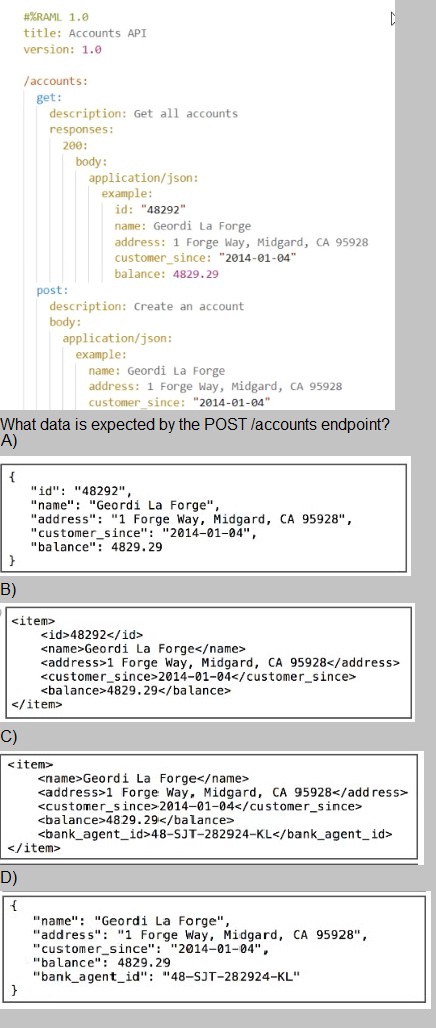
A.
Option A
B.
Option B
C.
Option C
D.
Option D
Option D
Refer to the exhibits.
What DataWeave expression transforms the conductorIds array to the XML output?
A. 1. 1. trains:
2. 2. conductorIds map ((engId, index) ->
3. 3. train: {
4. 4. engineerId: engId
5. 5. }
6. 6. )
B. 1. 1. { trains:
2. 2.
3. 3. conductorIds map ((engId, index) ->
4. 4. train: {
5. 5. engineerId: engId
6. 6. }
7. 7. )
8. 8. }
C. 1. 1. trains:
2. 2. {(
3. 3. conductorIds map ((engId, index) ->
4. 4. train: {
5. 5. engineerId: engId
6. 6. }
7. 7. )
8. 8. )}
D. 1. 1. {( trains:
2. 2.
3. 3. conductorIds map ((engId, index) ->
4. 4. train: {
5. 5. engineerId: engId
6. 6. }
7. 7. )
8. 8. )}
Explanation:
Points to remember:
* XML must have a root element.
* XML only allows one root element
* To avoid multiple root issues, you must create a root element for the XML output,
whenever we transform output
* When mapping array elements (JSON or JAVA) to XML, wrap the map operations in {(..)}
-{ } are defining the object
( ) are transforming each element in the array as a key/value pair
* The transformation to XML would fail if the above mentioned considerations were not
taken into account.
* Thus the transformation script declares a root element as trains and wraps the data in “{(
)}“.
Whenever you see such type of question, always look out for root element followed by {( )}
wrapping map.
I call this a "Wrap The Map" scenario. Hope it would help you remember !
What valid RAML retrieves details on a specific customer by its customerId as a URI parameter?
A. 1. /customers:
2. /get:
3. /customerId:
B. 1. /customers:
2. /{customerId}:
3. get:
C. 1. /customers:
2. /customerId:
3. get:
D. 1. /customers:
2. get:
3. /{customerId}:
Correct answer is below as it follows the correct syntax.
/customers:
/{customerId}:
get:
Refer to the exhibits.
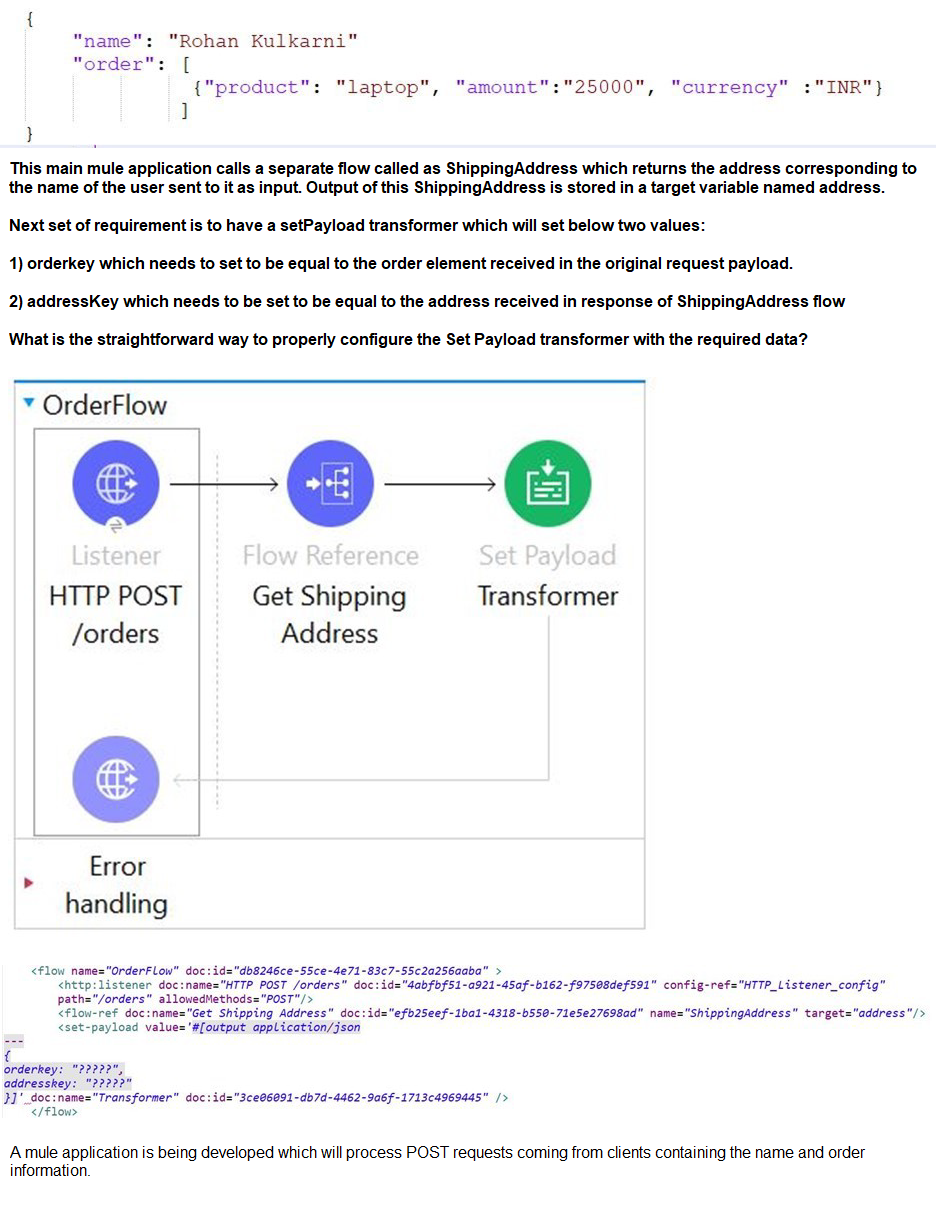
A. 1. 1. {
2. 2. orderkey: "payload.order",
3. 3. addresskey: "vars.address"
4. 4. }
B. 1. 1. {
2. 2. orderkey: "attributes.shippingaddress.order",
3. 3. addresskey: "payload"
4. }
C. 1. 1. {
2. 2. orderkey: "payload.order",
3. 3. addresskey: "address"
4. }
D. 1. 1. {
2. 2. orderkey: "attributes.order",
3. 3. addresskey: "vars.address"
4. }
Explanation:
Correct answer is as below. In this case address will be stored in a variable. Hence
payload will not be overwritten and will contain order details
{
orderkey: "payload.order",
addresskey: "vars.address"
}
Refer to the exhibits.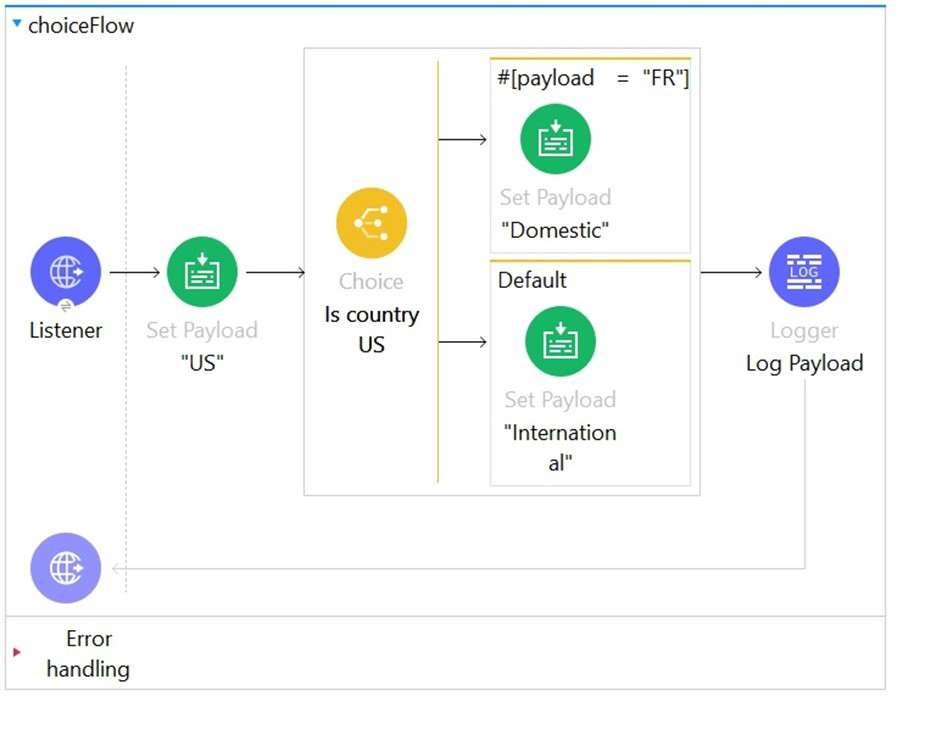
In the choice router, the When expression for the domestic shipping
route is set to "#[payload= "FR"]".
What is the output of logger after the execution of choice router is completed?
A. "Domestic"
B. "International"
C. "US"
D. A dataweave syntax error
To compare, DataWeave syntax is #[payload == "FR"]. In this case only one = is used so it will give syntax error.
Refer to the exhibits.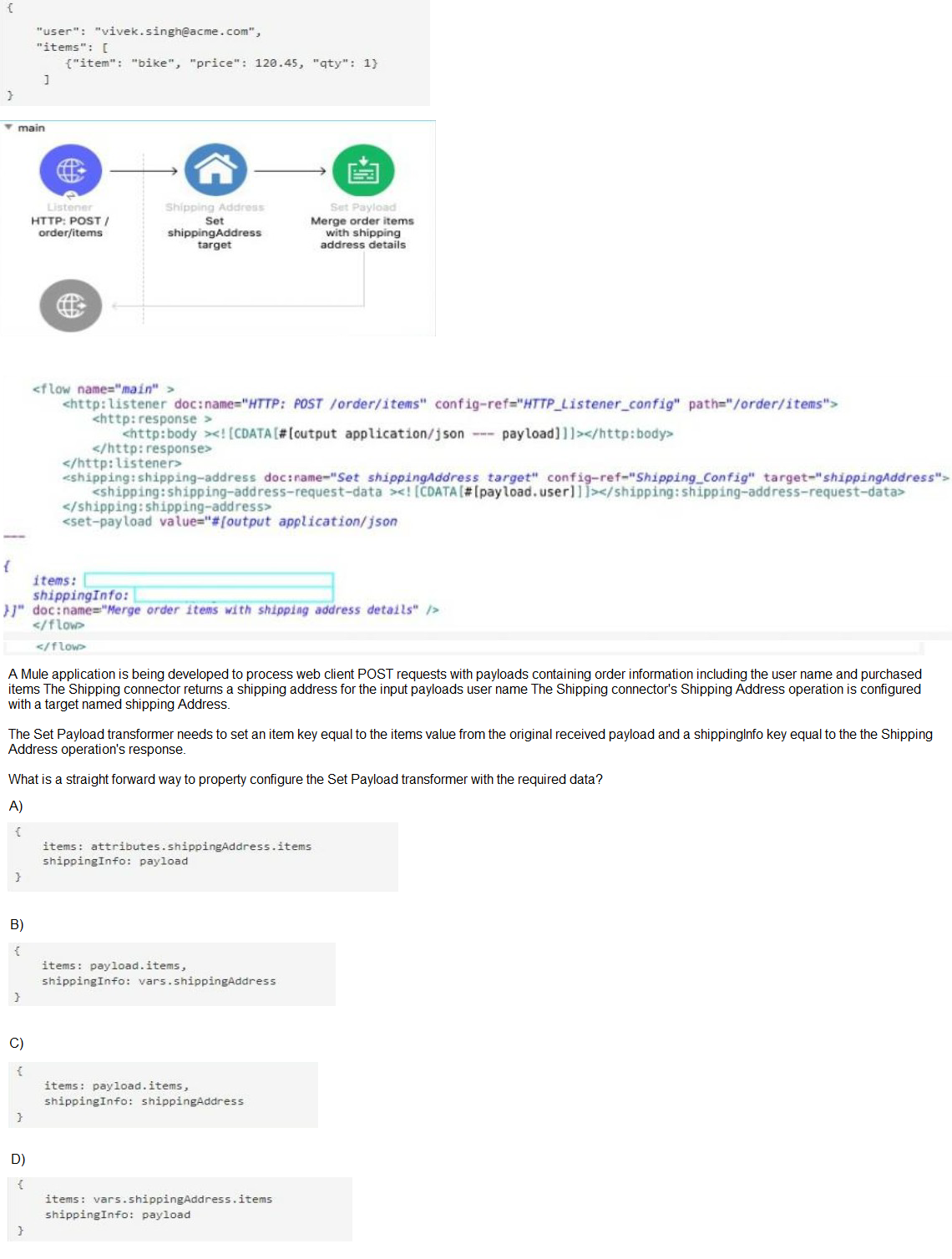
A. Option A
B. Option B
C. Option C
D. Option D
In the Database On Table Row operation, what does the Watermark column enable the On Table Row operation to do?
A. To avoid duplicate processing of records in a database.
B. To delete the most recent records retrieved from a database to enable database caching
C. To enable duplicate processing of records in a database
D. To save the most recent records retrieved from a database to enable database caching
Explanation:
The correct answer is To avoid duplicate processing of records in a database.
If a watermark column is provided, the values taken from that column are used to filter the
contents of the next poll, so that only rows with a greater watermark value are returned. If
an ID column is provided, this component automatically verifies that the same row is not
picked twice by concurrent polls.
Refer to the exhibits.
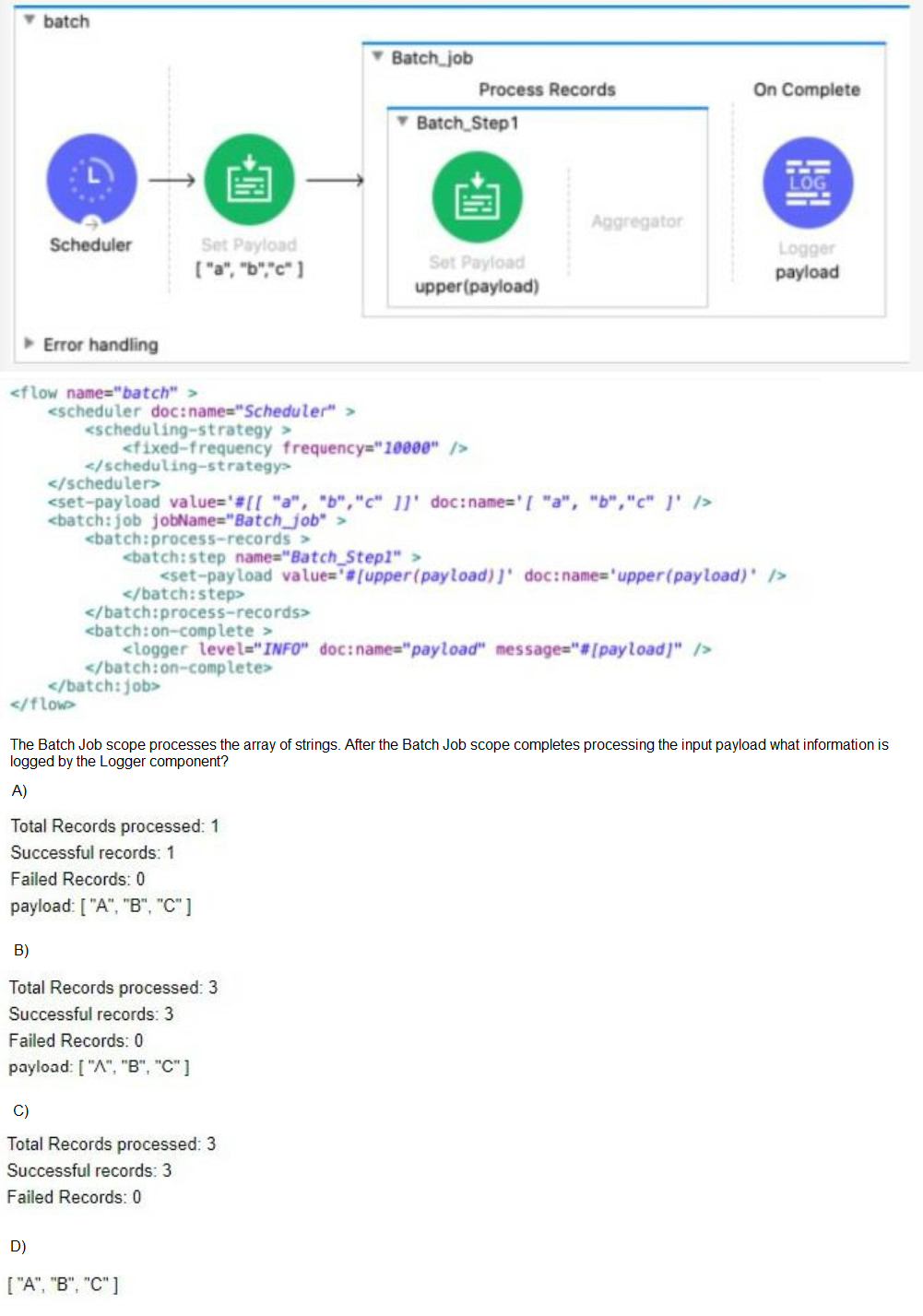
A. Option A
B. Option B
C. Option C
D. Option D
| Page 6 out of 29 Pages |
| Mulesoft MCD-Level-1 Exam Questions Home | Previous |